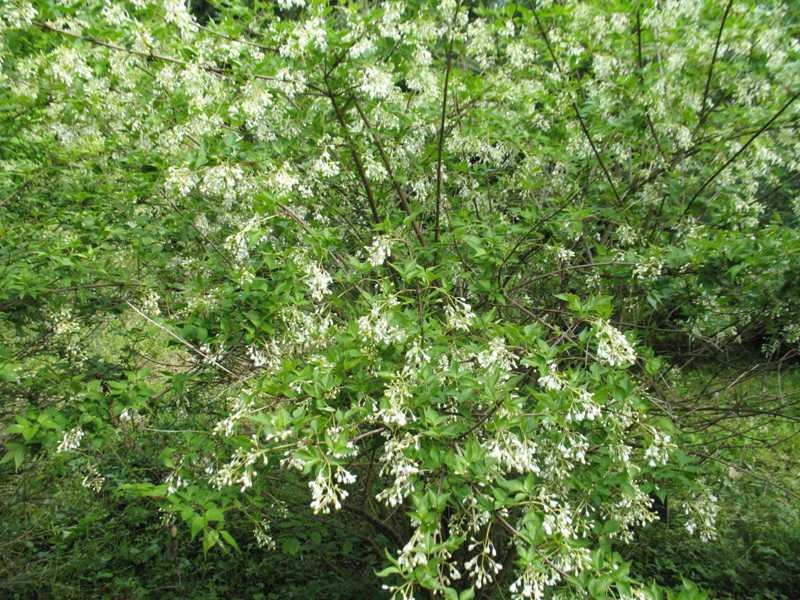Bladdernut (Staphylea bumalda)
Bladdernut
Staphlea bumalda, commonly known as Bumald bladdernut, is a deciduous suckering shrub that typically grows to 4-6′ tall and as wide. It is native to open forests, thickets and disturbed areas in Japan. Trifoliate leaves are in a pinnate arrangement, with each leaf featuring three elliptic to lance shaped leaflets (each to 2″ long) with serrate edges that taper to a point. Slightly-fragrant, bell-shaped, dull white flowers (each to 1/3″) bloom in spring (May-June) in loose erect panicles (to 2-3″ wide). Flowers give way to somewhat compressed two lobed fruits (seed capsules to 1″ long). The fruit for most shrubs in the genus Staphlea is an inflated baggy seed capsule (usually more inflated than the flattened capsules on S. bumalda). Seed capsules are often described as being “bladder-like” in appearance, hence the common name of bladdernut.
Genus name comes from the Greek name staphyle meaning a cluster from the arrangement of the flowers.
Specific epithet honors Ovidio Montalbano (1601-167- of Bologna, Italy. He used the pseudonym Johannus Antonius Bumaldus when publishing his Bibliotheca botanica (165- .

Easily grown in evenly moist, rich, well-drained soils in full sun to part shade. Do not allow soils to dry out. Propagate by seeds, cuttings and suckers.
| Hardiness zone | 5 - 6 |
| Sun light | Full sun to part shade |
| Water | Medium |
| Maintenance | Medium |
No serious insect or disease problems. Leaf spot and twig blight may occur.
Best in part shade areas of the landscape. Shrub borders, woodland margins. Shade gardens. Naturalized areas.
| Common name | Bladdernut |
| Botanical name | Staphylea bumalda |
| Plant type | Deciduous shrub |
| Family | Staphyleaceae |
| Hardiness zone | 5 - 6 |
| Water | Medium |
| Maintenance | Medium |
| Flower color | Dull white |
| Flowering period | May - June |
| Height | 4 - 6 ft. |
| Width | 4 - 6 ft. |